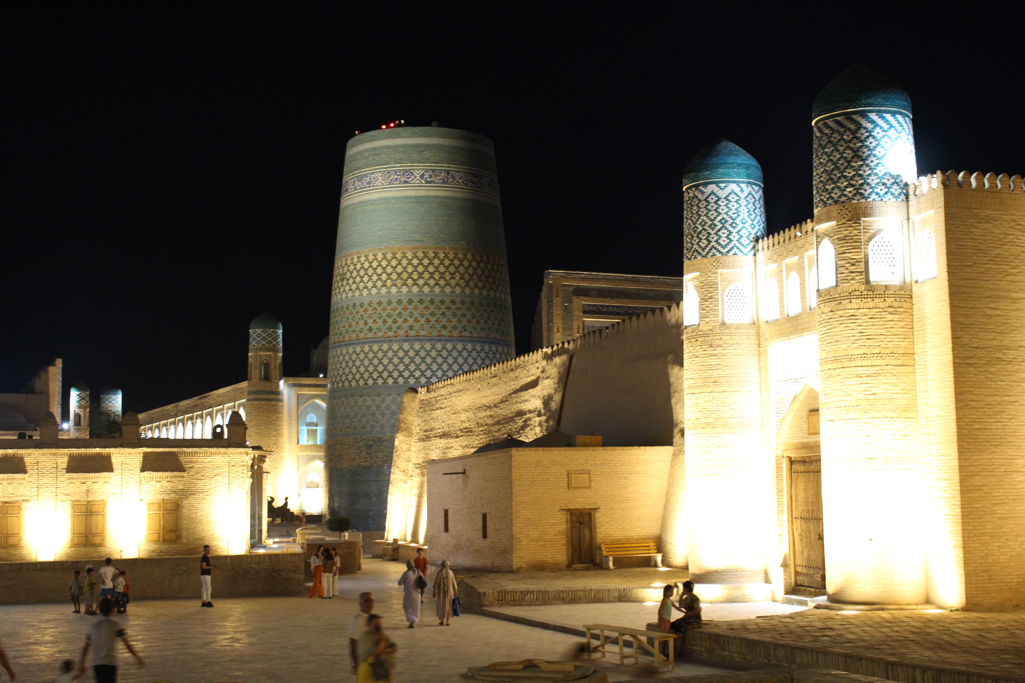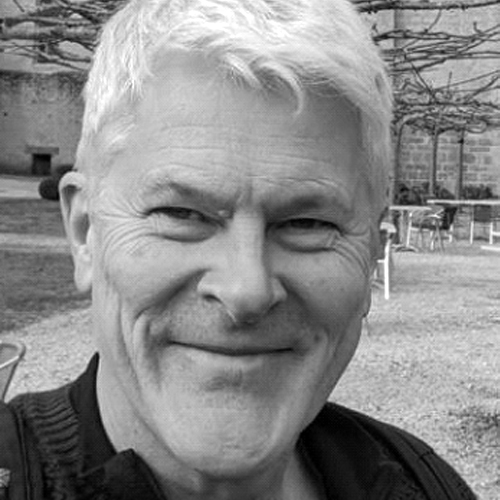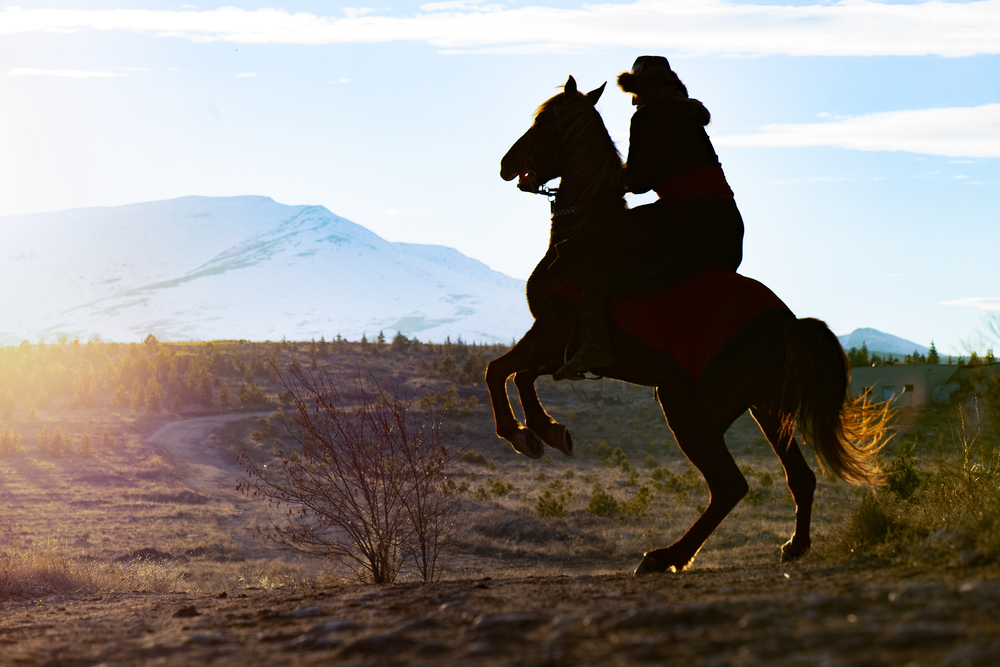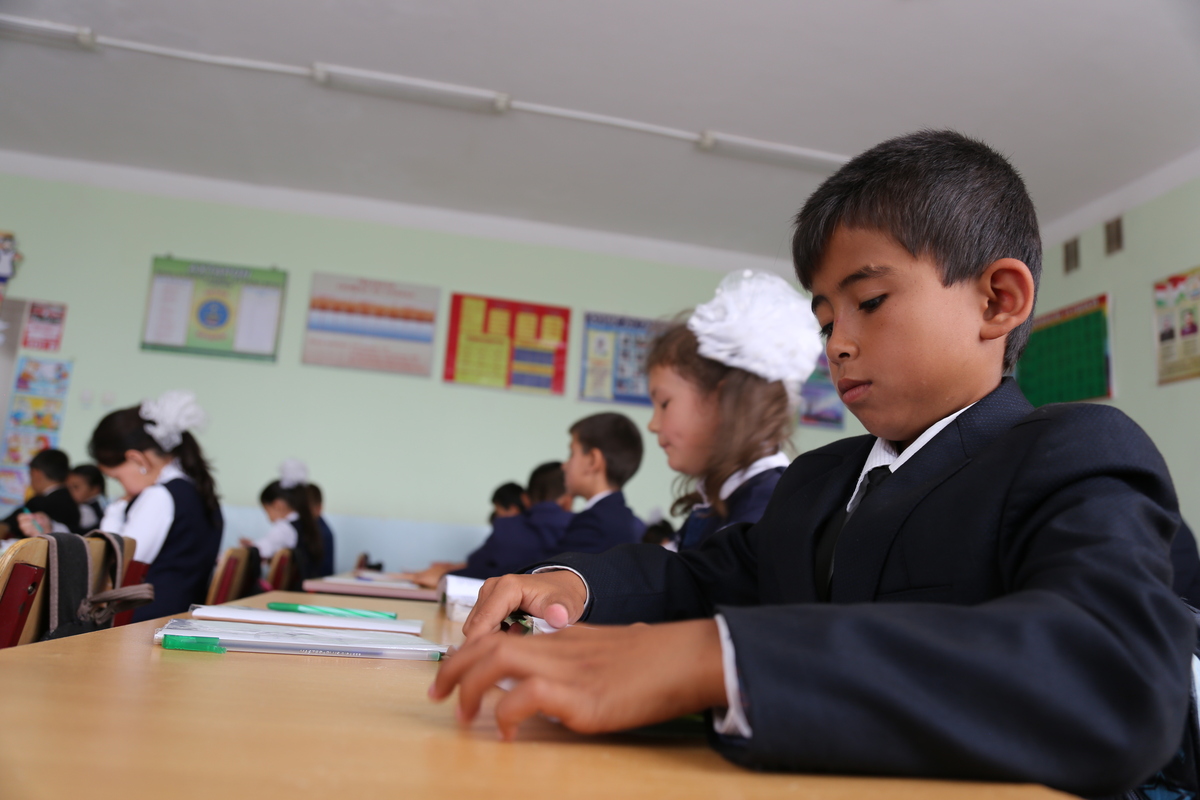- Home
- Khiva – A 21st-century Visitor’s Experience
30 November 2023
Khiva – A 21st-century Visitor’s Experience
Khiva, Uzbekistan is the Silk Route’s most memorable city claims veteran travel writer Mark Elliott who first visited back in 1994 when he counted a mere 7 foreign visitors in town. These days it’s an understandable tourist magnet. Here are Mark’s tips for making the most of a visit.

All images by Mark Elliott
The much vaunted ‘Silk Road’ linking medieval China with the West, was more a shifting network of trade routes than anything resembling a highway. Nonetheless, a few cities have come to typify the essence of that once great trading system in which camel caravans would cross huge inhospitable areas of Central Asia. Bukhara and Samarkand are probably the best known. However, better preserved than either is the fabulous little city of Khiva, also now in Uzbekistan.
The main access from the West Gate is unashamedly tourist-centric full of trinket sellers with a tempting range of local wares.
As capital of the once mighty Khorazm khanate it had been a wealthy place for centuries when 19th-century ruler Mohammed Amin Khan set about building what would have been Central Asia’s tallest and most memorable minaret. It was never finished but the stub that remains is nonetheless over 30m tall – ironically nicknamed Kalta Minar (Short Minaret). Its exterior is a feast of glazed tiling that appears predominantly blue at first sight but, on closer inspection, is actually a pastiche of many colours.
Today what makes Khiva such a gem is that its entire walled central core (‘Ichan Kala’) is so remarkably well preserved.
It’s only a five minute walk to far quieter ‘lived-in’ areas
The northern zone still feels lived-in, albeit with the large majority of traditionally styled homes doubling as family guesthouses. Meanwhile the central area has enough to keep you busy all day. Or much longer. Entering from the main (west gate) a visitor has the choice to purchase one of several possible day-passes, the simplest just allowing access to the complex while VIP options cover entry to the vast majority of the main historical buildings. Many of these are palace building and former madrassas (Islamic schools) as it was formally the custom for each ruler to found a new school during his reign. While the doors to attractions are marked (and have ticket checker ladies snoozing in cool corners) it’s always worth daring to push on doors that might look closed and see what you stumble across. Very often you’ll find a small museum of some sort. Many are very worthwhile such as the history of local currency in the Zorbkhona (mint), part of the Kunya Ark (the royal citadel within a citadel). In others the exhibits can feel merrily haphazard – eg the 1830s Tash Khauli Palace which includes a horse carriage presented to the khan by Tsar Alexander of Russia, some disused wooden waterwheels and a giant metal camshaft. Don’t be put off - further inside, off a heavily blue-tiled courtyard, is the harem with a sparkling restoration of where the khans wives might have slept. Or otherwise.
Guides invite visitors to imagine that one of the khan’s wives would await his attentions in a room like this, entering from a private door such as not to engender ‘jealousy’ amongst other concubines.
Don’t miss the Juma Masjid, a large, low-rise mosque founded by at least the 10th century. Its distinctive feature is an interior with over 200 wooden interior pillars (a few of them ancient) accessed through studded doors whose hefty timbers are supposedly 600 years old.
For a change of pace, you might intersperse visits to the countless blue-tiled courtyards with a stroll along the city walls.
Incredibly thick and curiously sinuous in places, access is through a small guarded doorway in the north gate. Probably the most appealing section is found by walking anticlockwise in the afternoon when shadows have started to add definition to the snaking contours of the ramparts.
Coming this way you can only get as far as the northern boundary wall of the Kunya Ark complex before returning the way you came but the wall is wide enough to stop and sit in the shadier sections to take stock of the atmosphere.
Though some museum buildings will close their doors around 6pm, the Kunya Ark itself tends to open later allowing visitors to climb onto the Ak Sheikh Baba platform before dusk for the classic sunset view.
For a true bird’s eye perch, you can also climb the Islam Khodja Minaret if you dare.
There’s an extra charge and a strict limit on how many people can climb it given the need to clamber up over 50m on steep, irregular spiral of steps within.
It’s not for the faint hearted as there are no ‘passing places’ nor landings that would break your fall should you start to slip and in places the wooden stair-edges are shiny with wear. At the top, however, you can peep through protective mesh at a full city panorama.
Look down as merchants spread their colourful fabrics on the square below, or later watch restaurants setting courtyard tables for dinner.
The city has some delightful dining options. Wrapped in high-ceilinged glass, Mirza Boshi is a good choice if you want to combine a pseudo traditional feel with good food and merciful air-conditioning.
Khorazm Art Restaurant, close to the handicraft bazaar (itself in an old caravansaerai that pierces the city wall), has an authentic feel and places tea beds outside the Allaqulikhan (Olloqulixon) Madrassa whose bowed brickwork and off-vertical iwan makes photographs look unreal.
However, for dinner the ideas dinner spot is the rooftop of Terrassa from which you get one of the best sunset panoramas possible while being very close to the central square on which a nightly free cabaret of Uzbek musicianship plays out.
A gigantic new five star hotel has been built a few kilometres out of town but for independent travellers, much of the fun is staying in Khiva itself. Many local homes double as family guesthouses, historical and historically styled buildings within and just outside the walls offer comfortable options. Right beside the Kalta Minor the former Muhamed Amin Khan Madrassa is now home to the Orient Star Khiva hotel. It’s such a subtle conversion from that you’ll likely mistake it for a museum.
Despite what you might guess from this photo, the Muhamed Amin Khan Madrassa is no longer active, being used instead as hotel. This group of guests were on a pilgrimage to track down the places where some of the Islamic hadiths had been written.
All in all, Khiva somehow manages to encapsulate the magical visitor notion of a Silk Route oasis without feeling twee or contrived. That’s really quite an achievement.
Read this next






